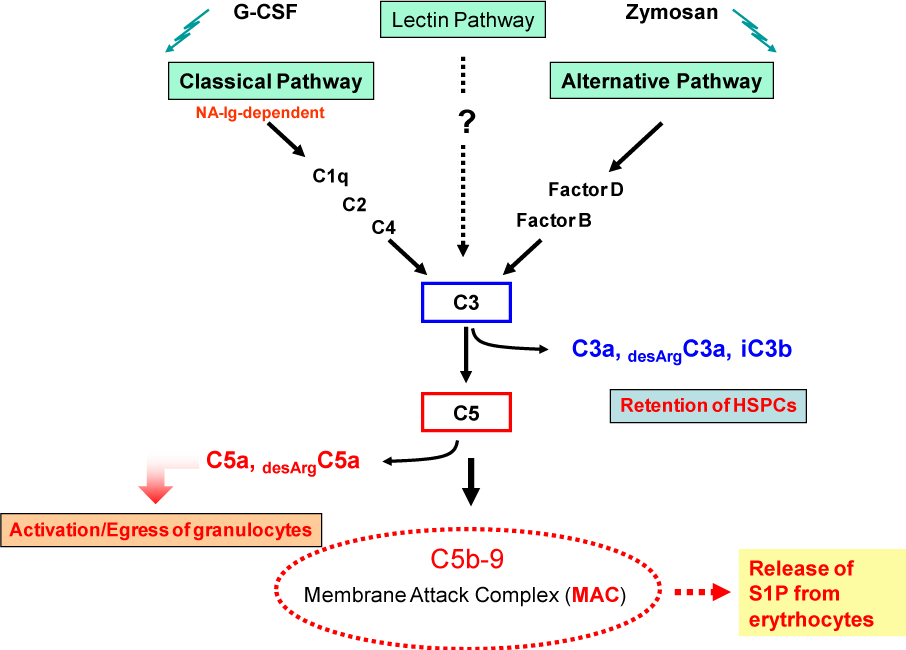
 |
| Figure 2: Complement cascade activation products differentially modulate stem cell trafficking. Upon activation of the CC system C3 and C5 cleavage products play opposite roles in the retention or mobilization of cells, respectively. While liquid phase C3 cleavage fragments (C3a and C3 adesArg) enhance responsiveness of HSPC to an SDF-1 gradient, solid phase cleavage fragment iC3b deposited onto surrounding surfaces helps to retain HSPC in their niche, C5 cleavage fragments (C5a and desArg C5a) promote mobilization of HSPC by degranulation of granulocytes (release of proteolytic enzymes) and chemoattracting them into PB. Granulocytes are first cells that egress from BM and thus pave a way for HSPCs that follow their footsteps. Thus we propose that an activated CC can affect stem cell mobilization in a negative (C3) or a positive (C5) way. |